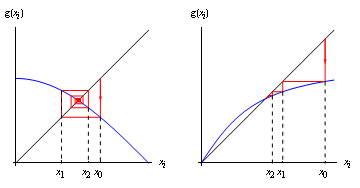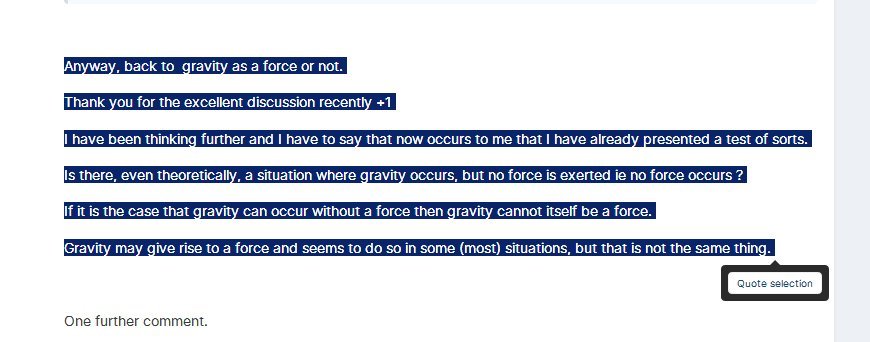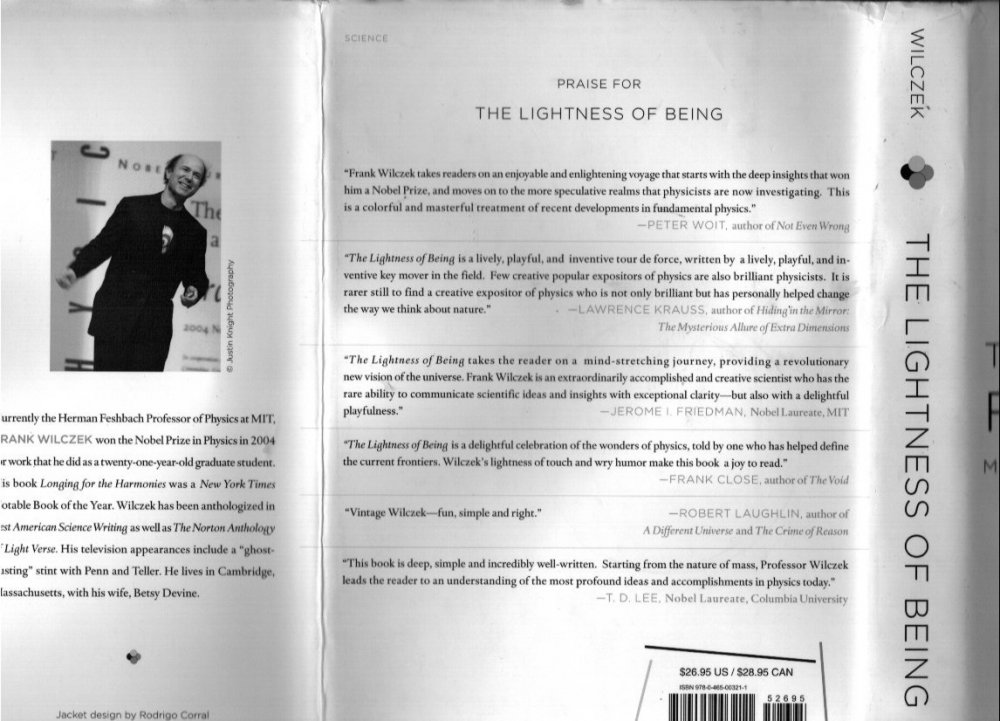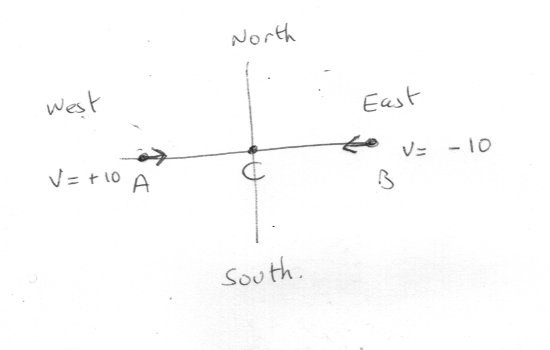-
Posts
18316 -
Joined
-
Last visited
-
Days Won
104
Content Type
Profiles
Forums
Events
Everything posted by studiot
-

What is the real difference between science and philosophy?
studiot replied to dimreepr's topic in General Philosophy
That last sentence suggest you should read what I actually said, properly. Wiki has a good pictorial representation https://en.wikipedia.org/wiki/Fixed-point_iteration and -

What is the real difference between science and philosophy?
studiot replied to dimreepr's topic in General Philosophy
It seems to me that Science says "The laser will never be clear at the other end of the optical cable unless it is correctly aligned" -

What is the real difference between science and philosophy?
studiot replied to dimreepr's topic in General Philosophy
You seem to mostly agree with my comments. Yes Philosophy (got it spelled right this time) overlaps many other disciplines. You know I always hesitate to say all. And that includes Science, as a general term. But these are similaraties, even samenesses. I still like to distinguish different branches of Science as in Materials Science, Earth Science ans so on. I suggested Materials Science way back because it was probably the first bit of 'Science' conducted by humans. My use of the separating slash it to try my best to overcome communication difficulties, introduced by differences of definition, and get my point across. So I offer a range of words of similar meaning, separated by slashes. In this instance I could have also included pith and essence. -
Graph theory is a geometric way of representing relations. The most basic is the elementary relation is the connection. eg A is connected to B, but A is not connected to C etc. Much of elementary graph theory - the travelling salesman, konigsburg bridges etc is devoted to solving simple networks possessing only the connectivity relation. When programmed as matrices for computing this use what is called the incidence matrix. This is not much use for spacetime however. The next up is the weighted connection and we can use the invariants as weights, noting the in spacetime every point is connected to every other point. 'Graphs' were developed for solving sets of simultaneous equations by geometric reduction proceedures. These (not to be confused with schoolboy xy plots as graphs) have been called flow graphs and set of quite sophisticated equations can be solved this way both linear and non linear including self regenerative equations. I have speculated before (though not here) that these would hold out much hope for incorporating the more complicated relations inherent in say GR. They have been used to do this with the stress tensor, that Mordred was so fond of. A pity he is also not with us for this discussion.
-

What is the real difference between science and philosophy?
studiot replied to dimreepr's topic in General Philosophy
Hello, Eise nice to hear from you again. Science and Philosophy have some differences and some overlap. And this topic is supposedly about the differences but there has been precious little discussion of these differences do far. I would venture to suggest it is worthwhile giving some consideration to the ovelap or where they are the same as well, since this can actually highlight differences. So here is an expansion of what I said earlier. In respect of data I hold that (modern) philosophy is interested in/about the broad/core/underlying principles. It is not interested in all the fine detail. Science on the other hand is dedicated to observing/recording/correlating/catelogueing all the detail, no matter how fine. This is one difference - Why should there be only one difference as implied by Dimreaper's question ? So are there more ? As regards the truth of knowledge, I have some knowledge of Harry Potter. Is that true of false ? I hold this is an inappropriate question as some of it is true (HP is a character in a fictional series of books) and some of it is false, as in the first line of the first book, "Harry Potter is a wizard". As regards @Davy_Jones comment on Have you heard of Banach's fixed point theorem ? Banach spaces are a branch of Mathematics that do precisely this. But that does not make them universally applicable. In fact there is considerable theory as to the applicability of the technique because it has very important applicability in Applied Maths and Computing. Finally I have observed that both Science and Philosophy need qualifying to be complete In studying the core principles of other disciplines, Philosophy overlaps many which Science does not For example the the Philosophy of the Arts, Moral Philosophy , Relious Philous Pholosophy and so on. Equally they sometime both overlap differently on some subjects as my earlier example of fishing shows. Both cases generate differences. -

What is the real difference between science and philosophy?
studiot replied to dimreepr's topic in General Philosophy
+1 A small point, I hope this thread will not become a battle of the (headline) quotes. It is really pleasing to see people thinks for themselves, and you have shown on many occasions that you are quite capable of doing this very well. I think it is good to read multiple authors on a subject to compare and contrast their thoughts and correlate agreements and differences, anf then form your own opinion. Multiple sources are better than employing just one or two high profiles sources eg Krauss or DrDon. I agree which is why I offered my idea of modern philosophy, as opposed to whatever it might have been in the past. Since this is a Science site there are plenty of notions of Science already on offer, although I find them overlimited in scope. -

What is the real difference between science and philosophy?
studiot replied to dimreepr's topic in General Philosophy
I thought that was why you put them in quotation marks, which I included in my extract. -

What is the real difference between science and philosophy?
studiot replied to dimreepr's topic in General Philosophy
Rather than indulge in a smartass slanging match I would rather discuss the content of my post. You have noted the influence of non scientists on science. This book makes salutory reading about the influence of Byron and Tennyson and Coleridge on the science of Geology. Coleridge was also an accomplished Mathematician, as I ahve noted here before. -

What is the real difference between science and philosophy?
studiot replied to dimreepr's topic in General Philosophy
David Hilbert -

What is the real difference between science and philosophy?
studiot replied to dimreepr's topic in General Philosophy
I think rudimentary mathematics came before either philosophy or science., although what we now call materials science may well have been contemporaneous with rudmentary mathematics. I dont' think this is correct because I think philosophy has developed beyond esoteric discussions down the pub. My concept of philosphy today is embodied in the idea of The Philosophy of Fishing Or insert your chosen subject here ...... That is a distillation of the core principles of the subject under consideration. -
Moller has an interesting view on 'Flat' geometry. The usual method of defining flat is to say there is no (zero) curvature ie the Tensor Riklm = 0. Moller says The two are, of course, equivalent. I interpret which is geodesic at every point to mean every point lies on a geodesic. Markus also makes the point that spacetime is a fundamental common to different descriptions. Have you ever heard of overdetermined systems ? Consider a set of 'spacetime points'. Now the structure for this set will be determined by the (set of) relations between the points. The 'formalisms' Marcus speaks of can be thought of different sets of relations. Each different set of relations will generate slightly different 'spacetimes'. That is they will make the mathematical structure of the spacetime set of points different. Useful ones must contain many similarlities or even congruences, if they are to reproduce observed spacetime behaviour. Now introducing a coordinate system into spacetime is not a minimum set. The spacetime is overdetermined. That is a coordinate system introduces information on structure which is not in the minimal relation set. To find the minimal set we can take frame invariants and deduce their relations. In flat geometry the interval is the frame invariant quantity. The minimal spacetime becomes a network of spacetime points, linked by invariant intervals. Such a network does not offer the unused property of orientation that arises from the use of a coordinate system.
-

Could the real size of the universe be infinite?
studiot replied to Strange Me's topic in Astronomy and Cosmology
I'm not quite sure what you mean by prove physically or by 'space points'. However mathematically things ae even weirder than your questions suggests since the cardinality of the Real numbers is the same as the cardinality of the Complex numbers. This means that the set of numbers forming a line has the same number of points as the set forming an area (which includes many lines). Perhaps a peano curve is a physial demonstation of this, if you want physical proof. You can even take this one stage (or more) further and state that volumes have the same number of points. And yet 1 cm2 is not equal to 1 km2, any more than 1cm is equal to 1km. -
I would add to this comment my own about a possibly more alarming misconception. I hope you are not implying that you consider the Earth's gravity to 'bend' spactime into a complete loop or shell around itself as your description of an orbiting object would imply. Personally I don't like the term bend or curvature since that implies the existence of a dimension that we have no evidence for. As with special relativity, imposing a coordinate system in general relativity implies addional information that is not needed for the relativity physics of the manifold. Topologically speaking the extra dimansion is not needed if the presence of mass simply imposes additional relations between the members of the set which makes the manifold. Particularly if these are local rather than global relations.
-
Not by me it wasn't. A great strength is that 'calculate' provides definite testable outcomes. Hand wavy dreaming and short quotes their own lacking context much less often, though sometimes we all like to 'shoot the breeze'. But at some point you can't discuss this subject without firm mathematics. Note firm does not have to be advanced. There is nothing that can be said in Mathematics that cannot be said in English, but English can also provide rational thinking that is not available in Mathematics.
-
Since you seem to like saying "Shut up and calculate." almost every other post and usually it seems in a disparaging light, I will say a few words about it. I believe (though I can't pick it out at the moment, perhaps it was another thread) that swansont already pointed out the need for sufficient study time and effort to appreciate these matters and I agree. The great advantage of 'calculate' is that you gain familiarity with the subject. You start to know what sort of values to expect in various circumstance. With enough of this you can step back, gain insights and formulate generalisations of the matter. Personally I have found this method of learning of great value. I know there are some who come to understanding by different routes. But it is a tried and tested route for the majority of us.
-
Two ways. 1) Don't include them in the first place. Instead of using the quote button, highlight (select) the text you want to quote and hover the mouse for a moment. That will bring up the option to 'quote' Click on that. like this 2) To remove the picture (I nearly always do this) just select it and click delete before to submit or in the edit mode after you have submitted. The input and edit boxes here are a real pain but this facility does work quite well. So how about considering this ?
-
-
Prefessor Who ? I suggest you read Nobel Physicist Frank Wilczek's book The Lightness of Being You might find more than one surprise in this book, relevant to this thread. For one thing he devotes a whole chapter to resurrecting the lumineferous aether. For another chapter he discusses gravity and some of the matters raised in this thread.
-
But I am also disappointed in that this latest round of discussion is veering rapidly off topic whilst there is a real paucity of response to my most recent offering of new thoughts on the issue of is gravity a force or not. At least I didn't say don't worry about force and use the term the force of gravity together in one post.
-
This invitation to 'correct' is too tempting to pass up. 'ether' is an organic compound containing an oxygen bridge - that is a C-O-C part. Luminiferous aether was proposed by european scholars as a medium to transmit electrodynamic effects. Now for the more serious stuff. No, I think causal is to strong a word and not what MigL or I meant. I prefer MigL's interact or my affect. (MigL's is better) 'Causal' has special meaning in theoretical Physics, that a simple interaction does not. But you are wrong to suggest I think that 'affect' automatically means reality; you are trying to oversimplify my points. I was actually asking not stating, except that I stated this was in the context of seeking a test (I meant but did not say an objective test). I proposed a test derived from the common slogan "If it can't interact with us the difference between not existing and existing is moot" Philosophy and Science (and many other disciplines) tend to define away matters they can't or don't wish to deal with. I pointed out that English Language is not so restrictive and provides the apparatus to many forms of 'reality' and non reality. I was disappointed in the paucity of response.
-
OK so in the sketch, A and B are moving in respect of the C frame. So if we want to find (calculate) quantities concerning A and B with repect to the C frame we have to correct for this motion. This is where my formula come in. [math]L = {L_0}\sqrt {1 - \frac{{{v^2}}}{{{c^2}}}} [/math] Now L0 is a constant, as is c and v is the relative velocity as already discussed. L is the distance that is measured in the C frame from C to A (or B). This can be seen to depend upon v. Further the formula allows us to calculate the contstant Lo by putting in v = 0. It can also be seen from the formula that L < Lo for any non zero value of of v. If v = 0 then L = Lo and the distance between C and A does not change, justifying my earlier claim that it is a constant. It is the distance between C and A that would be measured if they were in the same frame, which can only happen if v=0 (swansont) Since Lo is a constant and is evaluated by all observers as the same constant, it is a very useful value to calculate as I did in my first post. Because I can then use this value in the formula to calculate the distance C observes to A at any given velocity v. This I also did in my first post. Because it is so useful it is given the name proper distance. The proper distance is the distance between two objects corrected for the motion between them and is the same for all observers. I prefer to look at proper distance first then proper length, which is more confusing, because books talk about rulers and you then have to be careful to speciy which frame the ruler is laid out in. We can do that next time
-
Of course it has directionality. First we establish a coordinate sytem based at C. This is the C frame and C is not moving in this frame. A, and B are moving and both are approaching C at the same speed. But their velocities are different, because they are going in different directions. The exact opposite in this example. The negative is how we show which side of C the approach is made. Never be afraid to draw yourself a simple sketch. Have we got this straight now? I would like to move on to the next item in my calculations and I can then use this sketch to show what I am doing with the formulae so you can do less translation and concetrate on the physics/maths.
-
Clearly you know more about it than I do. Yes, but I prefer Rutherford. He was obviously prepared to make his philosophy fit his observations, not the other way round, despite his suprise.
-
My point is just how wrong Plato and company were in believing they could deduce everything by just thinking about it.
-
[math]\frac{2}{{40}} \times \frac{{1000}}{{250}}[/math] is wrong, can you see where ? This is homework ? Hint read the question again. But a jolly good idea to post the whole question and your working.
- 1 reply
-
1






